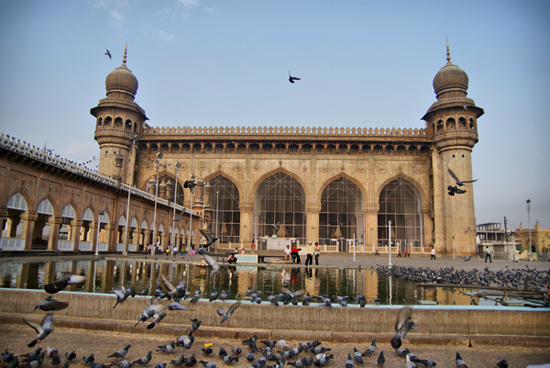
Hyderabad, May 20: The custodians of the 17th century Makkah Masjid, a popular tourist destination here, have prescribed a dress code for women visitors. Women wearing jeans, sleeveless tops and skirts would not be allowed inside the historic mosque.
The authorities of the mosque said women visitors must dress appropriately keeping in view the sanctity of the place. “Women visiting the mosque should wear Saree or Salwar Kameez. The idea is to respect the sanctity of the place,” said Moulana Burhanuddin of the Mosque.
Makkah Masjid, the imposing granite structure built by the Qutub Shahi rulers, is one of the largest mosques in India. It is popular among tourists who are allowed inside premises, except during prayer hours. About 6,000 tourists visit the historic place every day.
Quite often, skimpily clad women visitors cause embarrassment to the mosque officials.
Earlier, efforts were made to impose a dress code by supplying black robes and headscarves to the visitors. However, it did not work out as the tourists raised objections over the practice. It has now been decided to allow only those visitors who are appropriately dressed, the officials said. The women are also required to wrap shawls around their shoulders.
Incidentally, tennis star from Hyderabad Sania Mirza had earned the wrath of puritans a few years ago for wearing a short skirt and top during the shooting of an ad film in the mosque premises.
A fatwa was issued against her for hurting religious sentiments. However, she later tendered an unconditional apology.
They point out that there was nothing wrong in prescribing a reasonable dress code for visitors to any place of worship. For instance, visitors to the Golden Temple in Amritsar and Hazrat Saleem Chishti’s tomb in Fatehpur Sikri are required to cover their heads.





Comments
Add new comment